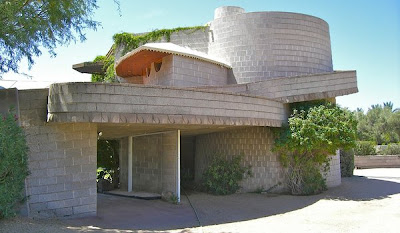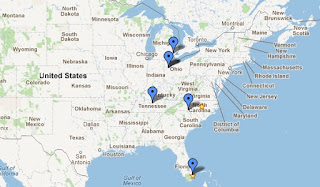 |
| Too late for this one |
I recently received a phone call from a reader from France: the lady's mother lives in a Fort Lauderdale waterfront home that she and her late husband had commissioned in the sixties with a well-known architect; the caller had a question.
She assumed that when her mother moves to a senior care facility and the house will be sold, it will be torn down. As if that is not sad enough, she continued by asking if I knew how some of the materials could be recycled. When I inquired if the house is still in liveable condition, she responded "absolutely". So why not sell it to someone who will preserve the house and its architectural integrity?
Shortly afterwards, I was invited to visit the house; the son keeps it in excellent condition. Priced right, it should not be too difficult to find buyers who will continue to maintain and love the house as it deserves.
The success of the story hinges – largely if not exclusively – on the
sellers: see the fate of the razed
Catalano house in Raleigh, NC, the uncertain ending for Fitzgibbon's
Paschal house in Raleigh, or the happy end for Chuck Reed's
String house in Hollywood.
If you shake your head: "nope, it's the
buyers", you're mistaken.
I realise I speak
pro domo, but through years of experience I learned that the
sellers decision on how to market a property makes the difference. An expert broker will go beyond advising on correct pricing – see Paschal house as a negative example – and reach into his/her database of like-minded clients, who in turn will want to preserve style and integrity of the original commission.
A recent example: when my office was fortunate enough to list the String residence, the sellers and I agreed upon a realistic price, I emailed every active prospect and client in my database, procured two full-price offers before the house even was on the MLS, got the bank to send an appraiser who had extensive experience with modern homes, and found new owners who will maintain the character of the house.
 |
| Catalano house, Raleigh, NC, by Eduardo Catalano, 1954 |
The Kronish house, the Catalano house, the Paschal house – they show that there is a need for guided involvement. Not for blind zealots trampling on owners rights, but for interested people becoming involved. Even if you do not own or sell your modern home, you can help promote modern architecture.
More on how to do just that – on a case-by-case basis or by supporting regional or national organisations such as Triangle Modernist Houses or the World Monument Fund – can be found
here. – Thank you.









